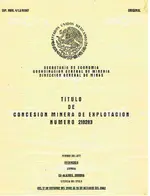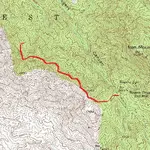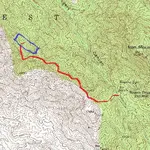View attachment 1320732
Is the Pit Mine really the Lost Dutchman Mine ?
This section of the Iron Mountain Arizona Topo Map shows the route I take (in
Red) to go from the hiking trail at the Rogers Trough and Mill Site to the "
Pit Mine".
The
Blue rectangle is the location of the
Silver Chief Mine that was located by J. Rogers in 1877-1878.
It is clear the "
Pit Mine" and the Rogers "
Silver Chief" mine are the same mine. This was verified and plotted from the mining records of the Randolph-Rogers mining District by Jack Carlson.
This raises the following questions:
Did Jacob Waltz take this mine from three Mexicans as the story goes and later J. Rogers found the mine and filed a claim on it ?
Did Jacob Waltz find a Mexican mine and use it to cache gold he mined from another location and later Rogers found it and claimed it ?
Was Rogers the first man to discover the ore deposit at the location and file claim on it ?
Since the Silver Chief was a Silver ore deposit, how much if any Gold was found along with the silver ?
The Lost Dutchman Mine has yet to be found and I certainly don't claim to know where it is located so to me, just about any mine could be the Lost Dutchman.
In my own opinion, having seen the Pit Mine I have to say it was a Chlorargyite Silver deposit quite rich that played out in a few years time. The Silver Chief was well known and documented in it's day. The Trough and Mill Site a mile southeast of the Silver Chief Mine was built to process the ore from this mine and a few others that adjoined it. I don't believe Gold in any appreciable quantity was ever taken from the mine.
Of course this is just my personal opinion and others may disagree.
Matthew






 He did not find it "while it was being worked", but a number of years after it was worked. If you know anything at all about the location of the Pit Mine, you can see by the document I posted above, that it does not relate to the Silver Chief.
He did not find it "while it was being worked", but a number of years after it was worked. If you know anything at all about the location of the Pit Mine, you can see by the document I posted above, that it does not relate to the Silver Chief.
